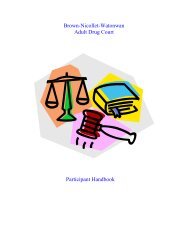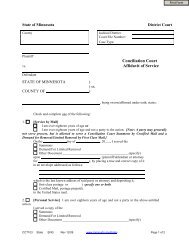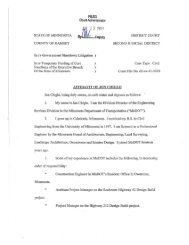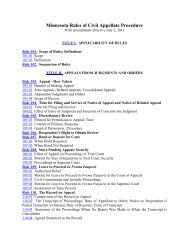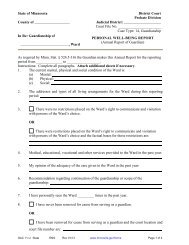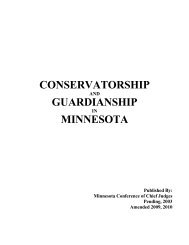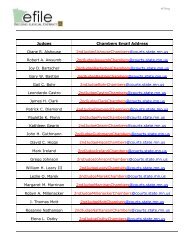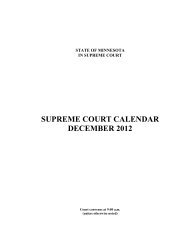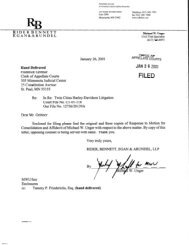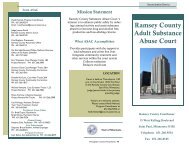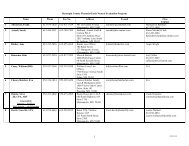1989-03-24 Comments of Star Tribune.pdf - Minnesota Judicial Branch
1989-03-24 Comments of Star Tribune.pdf - Minnesota Judicial Branch
1989-03-24 Comments of Star Tribune.pdf - Minnesota Judicial Branch
Create successful ePaper yourself
Turn your PDF publications into a flip-book with our unique Google optimized e-Paper software.
l As <strong>of</strong> July, 1981, 54% <strong>of</strong> judges, 47% <strong>of</strong> prosecutors<br />
and 13% <strong>of</strong> defenders approve <strong>of</strong> EMC for criminal<br />
proceedings.<br />
l The attitude measures revealed that judges, attorneys,<br />
and jurors possess a complex multi-factor set <strong>of</strong><br />
attitudes'toward EMC. Factor analysis yielded four<br />
reliable indices on which measures <strong>of</strong> judges and<br />
attorneys attitudes toward EMC can be conceptualized.<br />
0 Overall, the aggregate attitude measures are negative<br />
to neutral for judges and attorneys. Defense attorneys<br />
are considerably more negative than either judges or<br />
prosecutors in their attitudes toward EMC.<br />
l Judges and prosecutors developed a more positive set<br />
<strong>of</strong> attitudes toward EMC in the course <strong>of</strong> the experi-<br />
mental year. Defenders remained strongly negative<br />
in their attitudes.<br />
l Transference <strong>of</strong> responsibility, a phenomenon in which<br />
one group sees other groups but not their own group<br />
as being affected negatively by EMC, persisted in<br />
posttesting.<br />
l Factor analysis yielded five reliable indices on which<br />
measures <strong>of</strong> jurors' attitudes toward EMC can be con-<br />
ceptualized.<br />
0 Overall, the aggregate attitude measures are neutral<br />
to positive for jurors.<br />
l Large numbers <strong>of</strong> jurors, especially the inexperienced,<br />
felt that even the presence <strong>of</strong> conventional reporters<br />
and sketch artist (as well as EMC) creates the poten-<br />
tial for disruption, distraction, and participant<br />
apprehension.<br />
l Experience with EMC left jurors with positive atti-<br />
tudes toward EMC.<br />
Defenders, to a great extent, and judges and prosecu-<br />
tors to a lesser extent, seem to display one set <strong>of</strong><br />
attitudes when measured by the Survey and another set<br />
when_.interviewed after an EMC event. In puzzling over<br />
the possible explanations for this apparent discrepancy,<br />
the evaluators postulated several options.<br />
.<br />
-2250<br />
.



